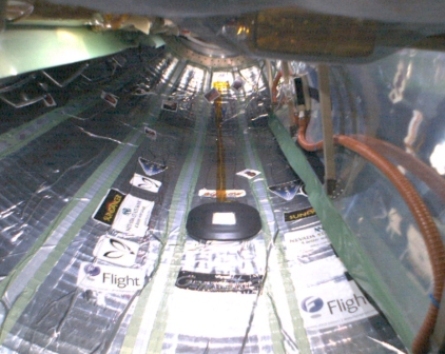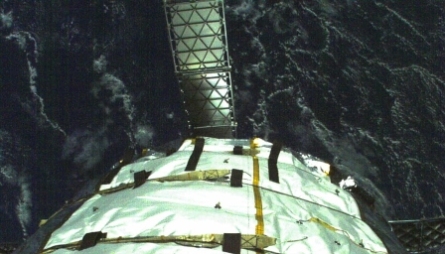Flight is the first aerospace industry publisher to have its umbrella logo for its print and internet publications successfully launched into orbit onboard Nevada based Bigelow Aerospace's Genesis II spacecraft.
|
|
|---|
Above: Flight's logos cover the interior of the Genesis II spacecraft |
The Genesis II was launched by an International Space Company Kosmotras Dnepr rocket from Yasny Cosmodrome in Russia's Orenburg region on 28 June at 2102h local time into a 550km (341miles) orbit with a 64.5degree inclination.
Bigelow tracked Genesis II using its ground stations in Virginia and Las Vegas and made first radio contact six hours after the launch at 1420 Pacific Daylight Time on 28 June.
| |
|---|
| |
Flight International, which celebrates its centenary next year (2008), reported on the birth of powered aviation a century ago and has charted all the world-changing developments from the jet engine to supersonic flight to the Moon landings.
Flight, through its magazines and website, flightglobal.com, expects to report on the future commercialisation of spaceflight in low Earth orbit and beyond, which is being spear headed by Bigelow Aerospace, Space Adventures, Space Exploration Technologies, Rocketplane-Kistler and from 2009 the suborbital tourism provider Virgin Galactic.
|
|
|---|
Above: An exterior picture of Genesis II showing its solar arrays |
Genesis II is Bigelow's second pathfinder mission to test systems for future manned commercial space modules the Nevada company is planning to manufacture.
The first pathfinder mission and its spacecraft, Genesis I, was successfully launched into the same orbital plane and altitude on 12 July. The 4.4m (15ft) long Genesis II vehicle, which is identical in size to its predecessor, inflated with air to a diameter of 2.54m following its solar array deployment.
|
|
|---|
Above: An artist's concept of a future module based on Genesis spacecraft I & II |
The spacecraft's flexible skin consists of several layers of fabric material including Kevlar and is impact resistant. Where Genesis II differs to Genesis I is its 22 video cameras, nine more than the first pathfinder, and a range of avionics and sensor systems.
Source: FlightGlobal.com























